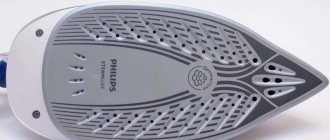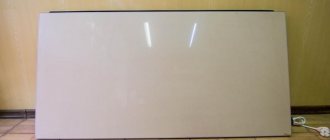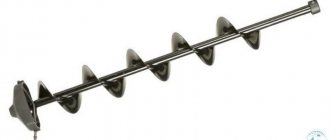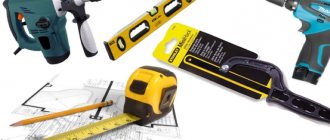Read in this article:
- Why are inhalations needed?
- Steam inhaler
- Compressor nebulizer
- Ultrasonic nebulizer
- Mesh inhalers
- Other selection options
- Efficacy of inhalation therapy
Inhalations are considered one of the most effective methods of treating respiratory diseases in children and adults. This procedure is also performed for some other diseases. For this purpose, special devices are used, which are called inhalers or nebulizers.
Why are inhalations needed?
Before choosing an inhaler, you need to clearly understand how and why such a device can be used. The concept of inhalation therapy involves inhaling medicinal substances in the form of tiny particles. They are formed from special solutions using inhalers and nebulizers.
The word "inhaler" comes from the Latin "inhale." "Nebulizer" is also a Latin word, meaning "mist" or "cloud". In both cases, we are talking about devices that convert liquid medicine into an aerosol for inhalation.
Inhalations are carried out using various medications prescribed by the doctor. This method of drug administration produces the following effects:
- Antimicrobial;
- Anti-inflammatory;
- Bronchodilator;
- Expectorant;
- Immuno-strengthening.
Inhalation therapy is used for bronchitis and pharyngitis, sinusitis and laryngitis, ARVI and bronchial asthma, as well as some other diseases. The advantages of this effect are the ability to deliver drugs directly into the respiratory tract, without a negative effect on the gastrointestinal tract, rapid effect, ease of dosing of drugs and the possibility of use in people of any age, starting from small children.
Inhalers are easy-to-use devices suitable for home use. When choosing a device, you should focus, first of all, on its type, on which the main characteristics depend. There are 4 types of devices in total, each of which has certain features, advantages and disadvantages.
What are the benefits of inhalations
Why are inhalers bought and why are there so many of them on sale? This procedure has long been used for any diseases of the respiratory tract, and in recent years, colds and viral infections sometimes become epidemic.
People also suffer from allergic cough, asthma, and pneumonia and bronchitis are becoming more common. Inhalations help against all these diseases. They not only reduce inflammation, but also promote better expectoration of sputum and are even a means of preventing viral infections. And the procedure carried out using an inhaler has many advantages:
— much less medicine is used, since it is absorbed better and acts more effectively;
— thanks to spraying into tiny particles, the drug enters the respiratory tract immediately, which speeds up recovery;
— they have fewer contraindications than the traditional procedure; they can be used even on infants.
Steam inhaler
Steam inhalers differ from other types of devices due to the high temperature of the inhaled steam. Due to the risk of burns, such devices are not recommended for children. The advantages of such models are:
- Reliability and long service life;
- Ease of use;
- Possibility of use for cosmetic procedures;
- Affordable price;
- Possibility of using oil solutions and decoctions of plants for inhalation.
But such a device is not suitable for treating the lower respiratory tract, since the large size of the particles does not allow them to penetrate deeply. In addition, many medications lose their properties when heated and have no effect.
Compressor nebulizer
Compressor inhalers are very popular due to their many advantages:
- The devices can work with any medicinal solutions without destroying their structure;
- The aerosol particles are very small and easily spread throughout the respiratory system;
- There are stationary and lighter portable models;
- They can work with a constant release of medication or synchronize with breathing, which allows saving solution.
In compressor inhalers, liquid is converted into an aerosol under the action of compressed air, and the pressure is created by a compressor unit. Due to this design, the noise level is quite high. The operation of the device can frighten a small child, so for children it is better to choose a different type of nebulizer.
Properties of the compressor inhaler
It also creates an aerosol cloud, but on a completely different principle. The process involves a powerful air flow that penetrates through a small gap in the chamber where the medicinal compounds are placed. During the operation of the compressor, a specific sound is heard, so those who are bothered by noise should not even decide which inhaler is the best, since an ultrasonic inhaler is suitable for them.
But a compressor inhaler sprays virtually any drug, so it is considered universal. Medicines can be delivered to the respiratory organs even from a considerable distance, since the inhaler is fixed on the mask. As a result, the device is recommended even for bedridden patients and small children.
Moreover, modern models can save medications, for which they are equipped with an exhalation-inhalation valve, which uses the drug only during inhalation. And this is important with very expensive inhalation formulations and makes you seriously think about which inhaler to buy.
Ultrasonic nebulizer
Ultrasonic inhalers operate almost silently and have many advantages:
- Can be used in a lying position, this is important for children and seriously ill patients;
- They have compact dimensions;
- There are battery-powered and mains-powered models;
- They form small particles of the drug that penetrate deep into the respiratory tract.
The main disadvantage of ultrasonic inhalers is the impossibility of treatment with antibiotics, hormonal drugs and mucolytic agents that dilute sputum. The fact is that these drugs lose their properties, being destroyed under the influence of ultrasound. In addition, to use the device, special cups are required, which wear out over time, so you have to purchase new devices.
Main differences
Before buying a device, you need to make sure that your choice is correct. The devices differ in several criteria.
Spectrum of medicines
In this regard, a compressor nebulizer would be the best. It is allowed to pour medications of various effects into the cup, including antibiotics and hormonal drugs. Ultrasonic inhalers destroy the structure of some active substances, so drugs containing antibacterial active components and hormonal ones cannot be used for inhalation. This is the main difference.
Noise produced
Compressor units make noise during operation. The sound level is indicated in the passport. Modern devices are quieter, but noise cannot be completely avoided. Nebulizers with ultrasound break down the medicine with waves of a certain frequency; a compressor is not needed for the device to function. Inhalations with such devices are recommended for young children .
Price
The difference in price is significant. Ultrasound devices are more expensive. At the same time, modern compressor nebulizers also cost a lot of money.
Portability
The difference between an ultrasonic inhaler and a compressor inhaler is in size and scope of application. Ultrasound-based devices are smaller, lighter, and can be powered by batteries or rechargeable batteries. You can wear it, take it with you, and use it if necessary. Devices with a compressor are connected to the electrical network; they are massive, heavy, and inconvenient to transport. Suitable for stationary home use. This is the main difference.
Tilt angle
The difference between a compressor nebulizer and an ultrasonic nebulizer is ease of use. The compressor sprays the medicine to the desired consistency when the bowl is in a level position and the person is sitting. As the angle of inclination increases, the effectiveness of the procedure decreases and the device works in vain. The ultrasound inhaler can be used in a lying position; the effectiveness of inhalation does not suffer from this.
Indications for use
Both devices are prescribed for the treatment of the lower respiratory tract. But there are differences. At the same time, ultrasonic inhalers are considered more effective because they spray the medication into small particles. Large drops settle on the surface of the bowl, the upper respiratory organs, only small drops enter the lungs and bronchi. However, very often, to achieve a therapeutic effect, the use of hormonal drugs and antibiotics is required. In this case, the use of ultrasound is not allowed.
Mesh inhalers
Membrane inhalers (also called mesh nebulizers) convert the drug solution into tiny particles, which, when inhaled, distribute evenly throughout the upper and lower respiratory tract. This happens due to low-frequency vibrations of the electron mesh membrane.
Such devices combine all the advantages of compressor and ultrasonic models:
- Ability to work with any medications;
- Low noise level;
- Compact design and light weight, battery operation, which makes it possible to take the device with you on trips;
- Economical consumption of medications;
- Possibility of using the device at an angle, including in a lying position;
- Easy to operate;
- Most models include masks, mouthpieces, and storage bags.
At the same time, the mesh nebulizer does not have the disadvantages characteristic of other types of inhalers. The disadvantages are the relatively high cost, as well as the need for careful care of the membrane. It must be washed as indicated in the instructions so that the nano-holes do not become clogged with particles of medicinal solutions. Another nuance is that the volume of the drug reservoir in membrane inhalers is usually smaller than in compressor inhalers.
So which inhaler is better: ultrasonic or compressor?
It depends on how often it will have to be used, for what purposes it will be used, what age the patient is, and on some other points.
The most important thing to pay attention to is the disease for which the procedure will be used. You need to know what size particles of the medicinal solution are produced in the device, how far into the respiratory tract they penetrate. It is better to consult a doctor about this. He can advise you specifically which inhaler is better: ultrasonic or compressor. It depends on the disease and the medications used. For example, if your disease requires regular use of antibiotics or steroids for the procedure, then it is better to purchase a compressor. And for children who have difficulty perceiving a mask on their face and the noise from the operation of the device, an ultrasonic one would be an ideal option. In addition, when choosing an inhaler model, you need to carefully study the instructions for it. Then its use will be as effective as possible.
Other selection options
So, when choosing an inhaler, you should pay attention to the main characteristics:
- Noise level – the compressor inhaler is the loudest;
- Particle size – the optimal indicator is considered to be 2-3 microns. Some models have a function for setting the desired size;
- Spray rate - the higher it is, the less time it will take for inhalation;
- Mobility – if you plan to use the device not only at home, you should choose a compact inhaler with a battery or batteries;
- Medicines used - Some medications are not suitable for certain types of inhalers.
It is advisable to make sure that the kit includes masks for adults and children, a mouthpiece, spare filters, and for the treatment of a runny nose - also a nasal cannula (nasal douche).











